Quick Summary: Cross-platform application development is a method of creating programs that can run on various platforms. These apps make use of reusable code that can be used across platforms to produce the same features. As a result, cross-platform development saves time and money for application developers. Cross-platform development, on the other hand, can result in a slew of performance and usability issues.
Over time, cross-platform mobile app development has become more popular. Entrepreneurs, start-ups, and SMEs are among those exploring the potential of cross-platform development. The increased demand for mobile apps has sparked a concept for reducing development time. Cross-platform development was born as a result of this. Platforms like React-native and Flutter are growing rapidly and making it easier to create native-like solutions. According to Statista, Flutter is the most popular mobile framework in 2024.
Before diving into the subject of cross-platform mobile app development, let’s understand what cross-platform development is.
What Is Cross-Platform Mobile App Development and Why Is It So Popular?
The term “cross-platform application development” or “multiplatform app development” is self-evident. This method allows developers to create a mobile solution that is compatible with multiple operating systems and platforms simultaneously (Android, iOS, Windows).
One of the reasons developers are switching from native to cross-platform development is the faster development time. As a result, by 2024, an overwhelming number of cross-platform app development frameworks will have arisen to meet that demand. When looking at Google trends indicators over the last five years, the rising frequency of search inquiries may be seen.
Simultaneously, it has brought some relief to investors and businesses, as they only have to invest once for many platforms. However, not all cross-platform frameworks work well, and it also depends on the project. A certain framework will only be appropriate for specific tasks. Ionic, for example, will not be suitable for gaming projects.
Similarly, React Native is not a good fit for heavy industry applications (we’ll go over why later in this article). These are some reasons why investors and developers are both undecided about whether to use Native, hybrid, or cross-platform technologies. The developer and investor must understand how the project will perform over time.
“When we deal with our clients, we hear the requirement, and then we ask some certain questions to our clients such as the company’s detail, what it deals in, what the purpose of the application is and to name just a few. Having gone through these questions, we explain everything in detail regarding which technology or framework will be good enough for the project and how it will help the company in the long run. Now, it is our clients who have to take the final call.“
said CTO Saurabh Barot
So, Where do we go wrong?
To understand this, we’ll have to take into consideration both developer’s and investor’s perspectives.
Developers choose a framework based on the following terms;
- Types of Projects
- Budget
- Available Resources
- Timeline/Deadline
Investors choose a framework based on the following terms;
- Fast Solutions
- Effective Services
- Low Maintenance
- Cost-Effective
So, the questions remain where do we go wrong?
You’ve seen what developers and investors are most concerned with. However, the actual target questions are missing, as you can see.
“We, sometimes, have to focus on the demand of investors, not the requirement of the project,” explained Saurabh while talking about the significance of frameworks in mobile application development. So, the solution here is that when you want to build a project for your business, you need to think in the long run (if you run a business or own a start-up company) instead of focusing on short-term goals.
The fact of the matter is the application must suit your;
- Company’s Infrastructure
- Services and Products
- Customers Demand
Setting aside these requirements can jeopardize your efforts, while if you keep this in mind, you surely achieve success. You must ensure that the application you are developing will be practical and engaging in the long run.
Some frameworks function fast, scalable, and effective, but they will be a good choice depending on the business type. Don’t just go behind fast and cost-effective development.
Choosing Framework
When it comes to technology selections, investors blow with the wind while you should go with a consistent plan.
In the case of mobile app development, we choose either native or multiplatform applications. When you select native app development, you have to hire dedicated app developers for each platform.
If you decide to use cross-platform, say, you don’t need to employ two or more developers at the initial stage. Now, most investors turn to cross-platform solutions as it provides cost-effective and fast cross-platform solutions. So let’s talk about some real-world business case study for cross-platform app development services.
Case Study of Airbnb with React Native
Airbnb was one of the first adopters of React Native. Initially, the company was happy with its performance. But, later, the company started facing many issues, forcing it to drop react-native cross-platform and turn back to a native framework. It is interesting to know what the reasons were.
In its post on Medium, Airbnb has explained everything in detailed explanations why it dropped React Native, what are problems it faced in two years (from 2016-2018), and what it does to overcome the loss.
React Native Immaturity:
In its series of posts, AirBnB wrote that React Native is an immature framework compared to iOS and Android. However, being a newer framework in the market, it is moving quickly, which created some excellent but lost bad issues to the company.
Maintenance:
As it was at its immature stage, the company had to deploy a team to patch the React Native source and maintain a fork. In two years, roughly 50 commits were added by AirBnB.
JavaScript Tooling:
As JavaScript is an untyped language created issues for engineers who used typed language. So, developers had one option that was to learn React Native.
JavaScriptCore Inconsistencies:
React Native is executed on the JavaScriptCore environment, the company had to go through some critical situations. For example, iOS has its JavaScriptCore while Android doesn’t; shipping with Android was done using React Native’s bundle. But, default tools were ancient, and they did not work well with AirBnB. As a result, the company had to find its solutions.
Learning New Frameworks/Libraries
The cross-platform development framework suggests that if you are a manager, you don’t need to hire two developers, and if you are a developer, you don’t need to learn two languages. But, it happens opposite in the case of React Native. 100% codes are not shareable across the platform, and therefore you need to modify them. React Native libraries use natural bridges to render such maps, video, and to name just a few. There you need a developer who has equal knowledge of native technologies. Unfortunately, you hardly find developers having mastery in two or more languages. So, what will you do here? Hire separate developers: that’s the only solution you are left with.
Three Development Environments
As a company, if you shift to a cross-platform app framework, you are just a beginner to the framework. On the other hand, you have to create bridges for all existing infrastructures if it is an established infrastructure. That may also create some uninvited circumstances.
Many similar circumstances, such as Crash monitoring, Native bridge, Initialization Time, Rendering time, App size, and to name a few, were creating issues. Airbnb has given complete explanations in 5 series of posts, and you can refer here for more details.
Is cross-platform better than Native?
The debate between the best cross-platform mobile app development and native development has raged on for years, dividing the tech world. Both technologies are in a continuous state of change. However, as systems converge, cross-platform appears to be the way of the future.
Let’s look at the differences between native and cross-platform development in terms of a few key variables.
| Factors | Native App Development | Cross-Platform |
|---|---|---|
| Architecture | Different apps for different platforms | One app for multiple platforms |
| Cost | High-Cost development | Relatively low cost of development |
| Code Reusability | Single Platform | Sharable. |
| Hardware Access | Platform SDKs provide complete hardware accessibility. | Access to all device APIs is restricted.S |
| UI/UX | Platform-specific & Consistent UI/UX | Unified UI/UX for all platforms with limited consistency |
| Performance | Seamless, fully native performance | High performance, but lags & have compatibility issues |
| Target Audience | Limited to a specific platform | The multiplatform mobile app, a wider range of audience |
| Development time | More time for development | Less development time |
| Team Size | Large (different resources for a different platform) | Small (1 resource for all) |
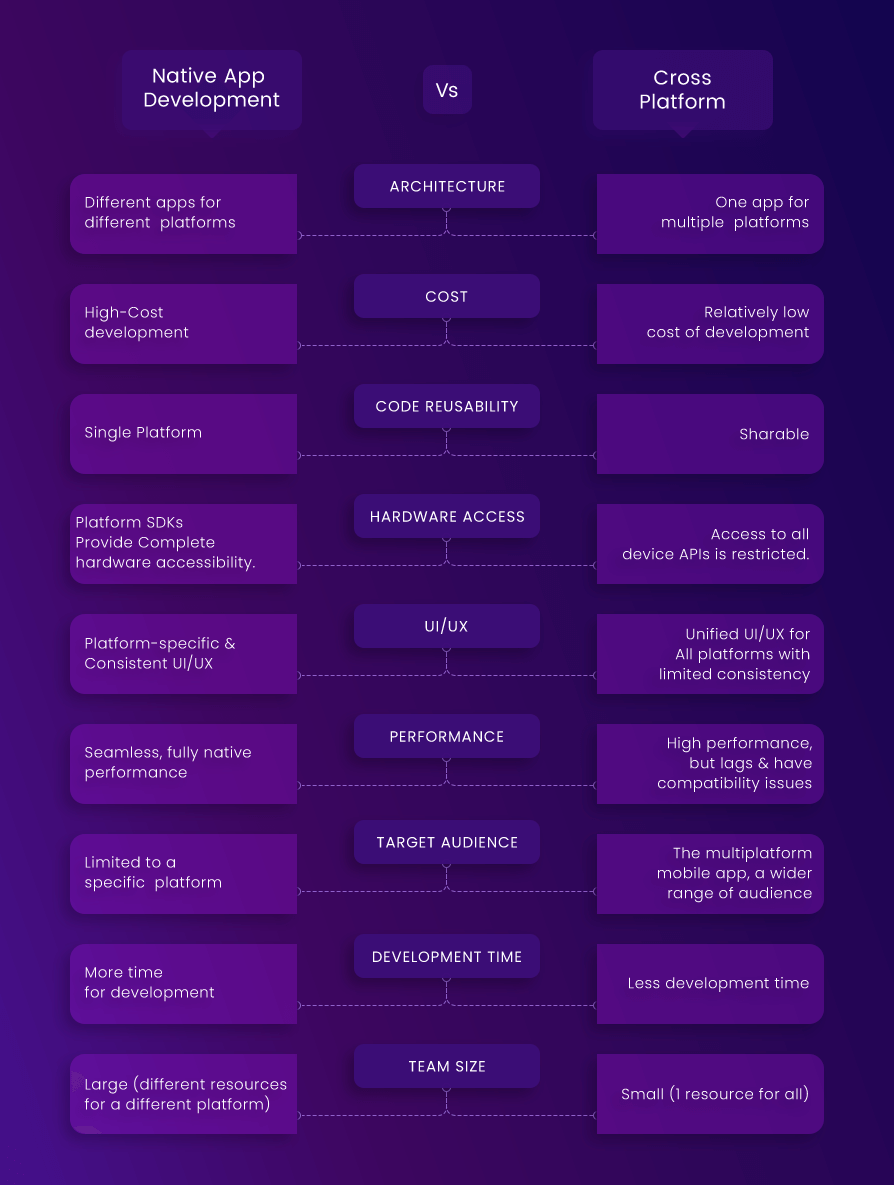
Does it mean Cross-Platform Framework is not worth using
Nope. Cross-platform is a must-have in today’s world, and you can’t work without it. It’s like essentiality for start-ups, small businesses, and investors. However, if you want to use the Cross-Platform frameworks for larger applications, you’ll have to wait until React Native and Flutter mature.
What are the Challenges of using Cross-Platform App Development?
Although cross-platform app development offers many appealing features (described later in the article), there are certain challenges in cross-platform app development, which include the following:

Lower Performance
Performance is one of the most important characteristics of an app. Of course, it depends on many factors, but, in general, if you compare two applications where one is native and the other is cross-platform, and both have the same functionalities, the native one will be slightly faster. However, these differences in performance are usually small, especially when it comes to simple applications.
Poor UI/UX
It may seem surprising, but most cross-platform applications fail because of the unnecessary features and difficult to navigate designs. Unfortunately, native apps are all about eye-catching animation features, 3D effects, and a beautiful blend of graphics enhanced by hardware features. Unfortunately, most cross-platform apps cannot take advantage of all of the functionality provided by mobile devices, resulting in a poor user experience.
The fact is that each gadget has its unique characteristics, making it difficult to provide the same functionality with a single universal code. As a result, developers must simplify features to ensure that screen layouts and images are consistent across all devices.
Delayed access to latest features
Those that choose to design a cross-platform mobile app will always be tuned to the framework they choose. And the issue with them is that they have a delay in updating. While Apple provides new capabilities to iOS and Google adds new features to Android, frameworks must adapt their development tools to integrate new functionality as the operating systems evolve. It will take some time. Cross-platform apps will always be a little obsolete & individuals who work with native apps start upgrading them right after an OS release.
Poor customization & navigation integration
Development frameworks could not support all features you need, including some options connected with hardware functionality (notifications, camera, or GPS), integration with device local settings, and inbuilt storage access. The lack of essential features support may result in blocking the operation of the entire application.
Code loss while moving to a new platform
Consider that using a cross-platform development framework is the most cost-effective option to create a cross-platform project. That platform ties you into your project in the same way that site builders allow you to create pages but don’t allow you to reuse them on other sites. Always think of the bigger picture while selecting the framework. If, in the future, you decide to switch to another framework, all your efforts can be lost.
Limited tool support in the framework
Build cross-platform apps only if you know exactly what features to include in your project and are confident that your development framework can handle it. There may not be enough tools for app customization for many organizations. According to experts, the greatest programming languages for cross-development are Ruby on Rails, Java, and TypeScript. They aren’t ideal, though.
What are your options for dealing with this? Hiring dedicated developers with cross-platform experience is always a good idea. Regardless of the framework they use (Flutter, Ionic, Xamarin, or React Native), they will almost certainly know more about the issue than you do and will be able to make smarter decisions.
What is the Solution Then?
If you’re looking for permanent solutions, then native is the best option to go for. If you want to go with a cross-platform application, keep the following suggestions in mind.
Costing
If you’re attracted to cross-platform mobile application development, you must consider both sides of the issue. It’s feasible, for example, that it will initially cost you less and that you will be able to get it developed at a lower cost. However, as maintenance and feature upgrades are implemented, the price will rise. Multiplatform mobile app development, on the other hand, will be useful for smaller projects for the time being.
Platform
First and foremost, you must select whether your software will be available on a single or several operating systems. If you want to reach a broader audience made up of people who use different platforms, cross-platform development is the way to go. On the other hand, if you simply need to reach Android or iOS customers, creating a flawless user experience with a native solution would be your top focus.
Complexity
This factor refers to the extent to which you want to take the product. One way to deal with this problem is to determine whether you want to use an MVP to test your idea or whether you’re ready to go full throttle with a full-fledged app. The functionality of your product (for example, access to the hardware of a mobile device or platform-specific functions) is another question you must address.
Native Feel
You should consider how native you want your mobile application to feel to the user. Designing the application with Material Design (Android) or the Human Interface Guidelines (iOS) in mind makes the digital products intuitive and user-friendly. But you can also achieve this by using some of the most popular cross-platform frameworks (Discussed later in the article).
Price & Time
One thing is certain: developing native code is neither cheap nor quick. Moreover, building separate applications for different platforms necessitates a larger number of developers, which could cause the newly-minted start-up to go over its initial budget. On the other hand, choosing the cross-platform strategy will result in the outsourcing of a smaller but equally professional workforce, which is a time- and cost-effective alternative.
Availability of Developers
If you opt for a cross-platform application, you don’t need to have three different developers for three different frameworks. You just need one developer. But there are instances when you need to separate developers for each platform.
Maintenance
Investors seek out the program that requires the least amount of maintenance. Cross-platform development takes little upkeep while choosing the correct frameworks is crucial.
Flexibility
This is, without a doubt, the most crucial point to remember. If the scenario calls for it, flexibility permits you to go from one framework to another. To make sure the structure you’re working with is adaptable.
What are the Benefits of using Cross-Platform App Development?
Although cross-platform app development has several challenges, it also has many advantages that represent new business opportunities. The development methodology saves money while also allowing you to reach a larger audience. The following are some of the advantages of a cross-platform mobile application:
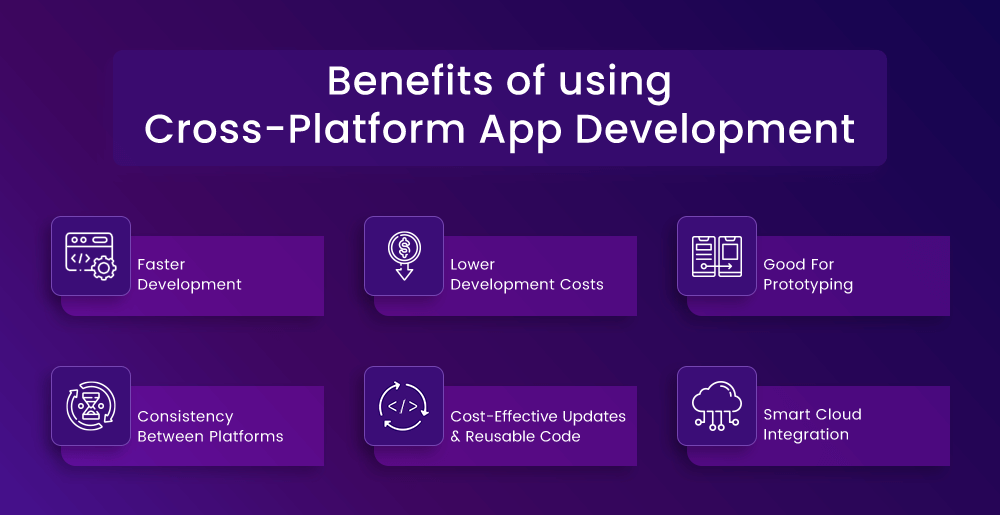
Faster Development
The best benefit of cross-platform development is that it is less time-consuming. For example, suppose there is a prototype of a ready-to-launch product with one codebase. That means you’ll have fewer developers who will be cost-effective. And suppose there are some changes in the application, then you can change it in just one codebase rather than changing it in different codebases. The summary is Cross-platform framework takes a short period.
Lower Development Costs
This benefit is linked to the previous one. Cross-platform development enables business owners to distribute their products across many platforms (such as the Google Play Store or the App Store) without engaging in native app development. As a result, the strategy works well for corporate digital goods, which are rarely profitable in the traditional sense. Companies might be able to save money by establishing a universal solution.
Good For Prototyping
As an MVP, create a cross-platform mobile app to test your business idea because the strategy is less expensive than native app development and allows you to reach 98 percent of mobile users. It is a good way for entrepreneurs to avoid taking chances with their company ideas. Cross-platform app development is also a good way to prototype and pitch ideas to investors. With a cross-platform approach that is more cost-effective than ever, collect user feedback, evaluate statistics, or exhibit your unique concept to investors on their mobile devices.
Consistency Between Platforms
Morden cross-platform frameworks are extremely convenient and dynamic. Comparing to the native app development, it is easier to build a high-standard app using Flutter, React Native, or Ionic. You may not get all the essential features that you’ve imagined. However, there are various ideas available to work out complex ideas with cross-platform developments.
Cost-Effective Updates & Reusable Code
If you’re using the native application, you need to update two separate apps if you want to improve your digital product. Code written in both platforms can be customized at any time, and you can see the changes immediately. You save money not just on development but also on app improvement, bug fixes, and customization based on user input and usage statistics compared to native platform development. You can also employ cross-platform code that you can reuse in other projects.
Smart Cloud Integration
Most cross-platform solutions will support cloud-based technologies starting in 2019. As a result, their development framework includes various cloud integration options, including ready-to-use plugins for supporting app features and modifying the design. It can also be used to store data.
Best cross-platform mobile app development frameworks available
There are several cross-platform mobile development frameworks on the market, each with its own set of advantages and disadvantages. However, no single framework can meet all of the requirements for cross-platform app development. It depends on your needs, the programming language you use, and the platforms you intend to target.
The following list should be considered while choosing the best cross-platform app development framework.
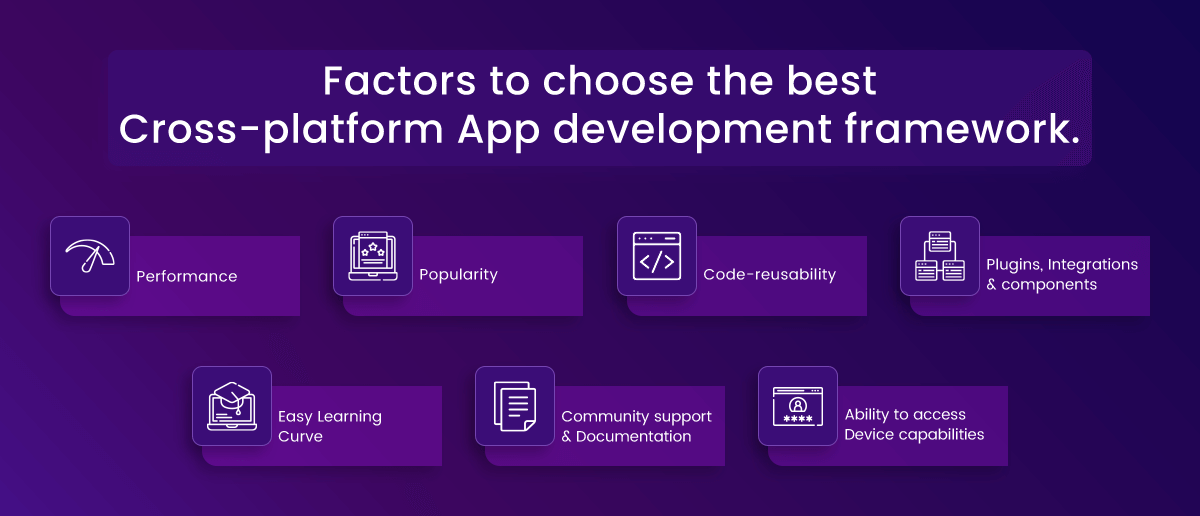
- Performance
- Popularity
- Code-reusability
- Plugins, Integrations & components
- Easy Learning Curve
- Community support & Documentation
- Ability to access device capabilities
Let’s take a look at the top 4 best cross-platform frameworks.
Top 4 Best Cross-Platform Frameworks

- Flutter
- React Native
- Ionic
- Xamarin
Flutter
Flutter is a popular open-source, and free cross-platform framework developed and published by Google in 2017. It develops programs for Android, iOS, Mac, Windows, Linux, and the Web from a single codebase using the Dart programming language. Flutter has a strong following in the cross-platform community as its versatile SDK for mobile app development.
According to StackOverflow annual developer survey, 13.55% of professionals love to work with cross-platform Flutter.
Unfortunately, Flutter and Dart language haven’t been around that long, which is why it’s not entirely mature and stable.
Features of Flutter
- Flutter enables developers to work on the most up-to-date interfaces by promoting a portable GPU that renders UI power.
- Flutter is the best solution for developing a Minimum Viable Product (MVP) app because it starts the development process quickly and is cost-effective.
- Hot reload features in Flutter allow developers to make changes to the backend without saving the file.
Other Important Information
- Programming Language: DART
- Famous Flutter Apps: Google Ads, eBay, Xianyu by Alibaba, Postmuse – Instagram Photo editing tool.
- Recommended Courses: Flutter & Dart – The Complete Guide
- Average app development cost: $5000 – $75,000
- The average salary of Flutter developer: $71,248/yr (Glassdoor)
Architecture: The following diagram shows a high-level view of flutter application software

| Pros | Cons |
|---|---|
| Easy to learn | DART is a less popular programming language |
| Simple to debug & fully Compiled | The hot reload feature works only with DART |
| Flutter features a full collection of widgets in Google’s Material Design and Apple’s aesthetic with the Cupertino pack. | Flutter supports not all devices. For example, it will not run well on a 32-bit machine. |
| The Hot Reload feature allows developers to see changes to the code in real-time. | Fewer Third-party packages are available to support Flutter on multiple platforms. |
| The flutter community is active and is evolving. | Flutter is suitable for large-scale projects. It is also suitable for MVP and start-ups. |
React Native
React Native is facebook’s open-source, cross-platform mobile app development framework. Launched in 2015, it uses JavaScript and React.js libraries to build Android, iOS, Mac, Windows, and Web apps. React Native is a great choice for simple apps where the APIs have a clear bridge between platforms. However, for complex apps, native code is often needed to bridge any gaps in functionality.
According to Stack overflow’s annual developer survey, 14.51% of developers love to work with React Native.
Features of React Native
- React Native is an open-source, cross-platform app development framework and has a large community to support it.
- React Native is based on One-time coding for developing cross-platform applications for diverse platforms, so there’s no need to hire mobile app developers twice separately for the same app on different platforms.
- Highly compatible with third-party plugins.
- The primary focus of this framework is UI and rendering a highly responsive interface and smooth interface.
Other Important Information
- Programming Language: JavaScript
- Famous Flutter Apps: Facebook, Bloomberg, Walmart, Uber, and Shopify.
- Recommended Courses: The Complete React Native + Hooks Course
- Average app development cost: $20,000- $50,000
- The average salary of Flutter developer: $71,248/yr (Glassdoor)
Architecture: The following diagram shows a high-level view of react native application software
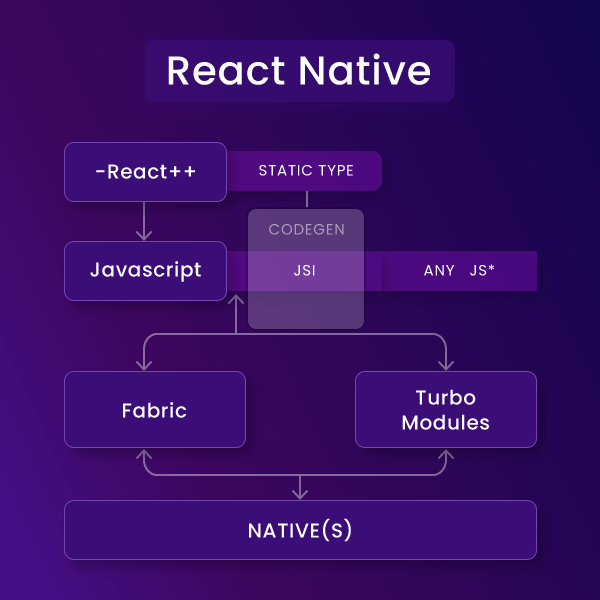
| Pros | Cons |
|---|---|
| Great focus on UI | Not truly cross-platform |
| Highly responsive interface | Not 100% reusable code, depends on the app’s complexity |
| Rich variety of Built-In, driven components and API saves time | Lack of consistency in Updates |
| The fast Refresh feature allows the developer to see changes made within seconds. | Not effectively optimized for speed and memory use |
| React Native is supported by contributions from developers and companies around the world. It has the highest number of contributors on GitHub | Higher third-party dependencies. |
Ionic
Ionic is an open-source framework that uses web technologies like HTML, CSS, and JavaScript to construct cross-platform, desktop, and progressive web apps with Angular, React, and Vue frameworks. It makes use of SaaS UI and is based on Cordova. In addition, it uses the Cordova and Capacitor plugins to access native functions like the camera, GPS, and flashlight.
Ionic has its IDE, called Ionic Studio. It also has capabilities like code deployment, automatic builds, and lazy loading, among other things.
Features of Ionic
- Cross-platform
- Web Standard-based
- Simplicity
- Cordova Plug-in
- Iconic CLI
- Framework Compatibility
- JavaScript Components
- Supports Angular
Other Important Information
- Programming Languages/Frameworks: JavaScript, Angular, React and Vue.js
- Famous Ionic Apps: NHS, EA Games, and Southwest Airlines.
- Average app development cost: $108,857 (Zip recruiter)
- The average salary of Flutter developer: ₹15,639/mo
- Recommended Course: Ionic – Build iOS, Android & Web Apps with Ionic & Angular
Architecture: The following diagram shows a high-level view of the Ionic application architecture.
| Pros | Cons |
|---|---|
| Well-based on technologies Angular, HTML, CSS, and javaScript | If one wants to go beyond basic apps, knowledge of Angular JS is almost necessary |
| Compatibility with React, Vue, Angular and supports Cordova Plugins | The lower performance of apps |
| A wider range of tools, Plugins, and UI components | Difficult navigation because of complex UI |
| Iconic is backed by a vibrant community of developers and sufficient documentation. | High dependency on plugins. Some native plugins are not compatible and can conflict with each other. |
Xamarin
Xamarin is an open-source, cross-platform app development framework that uses C# langugae. Xamarin was launched in 2011 and was acquired by Microsoft in 2016.
Xamarin offers great compile-time checking allowing developers to experience fewer errors during the run-time. In addition, Xamarin makes it easy to design a native-like app with its native-friendly interface and control assisting. It Integrates with Visual Studio, Microsoft IDE for the .NET framework to build apps for Android, iOS, macOS, and Windows (UWP).
But keep in mind that in May 2020, Microsoft announced that Xamarin. Forms would be deprecated in November 2021. In addition, Microsoft has launched .NET Multi-platform App UI (.NET MAUI). You can get more information on .NET MAUI here.
Features of Xamarin
- Cross-platform
- Uses C# library
- Promotes Easy Linking
- Seamless app customization
- Supports WORA
- Amazing Native user interface and controls
- Supports native-level integration
Other Important Information
- Programming Langugage: C#
- Famous Xamarin Apps: UPS, Alaska Airlines, Microsoft News, and BBC Good Food.
- Avg. App Development Cost: $25,000+
- Avg. Salary of Xamarin developer: $88,150 /yr (Glassdoor)
- Recommended Course: The Complete Xamarin Developer Course: iOS And Android!
Architecture: The following diagram shows a high-level view of the Xamarin application architecture.

| Pros | Cons |
|---|---|
| Truly Cross-platform | Xamarin apps are larger depending on the complexity |
| Platform Specific UI | Not recommended for heavy UI/UX app |
| Supports linking with native libraries and APIs | Limited access to open-source libraries |
| Strong Community | Individuals and start-ups can use Xamarin for free. Enterprises, on the other hand, must purchase a Visual Studio license. |
Questions You Should Ask While Choosing The Right Framework
One of the most difficult aspects of software development is creating apps for multiple mobile platforms. Technologists desire consistent performance across all platforms and device form factors and access to the unique capabilities offered by the top mobile operating systems – iOS, Android, and Windows. Cross-platform development appears to be the way to go from an efficiency and cost standpoint; however, as Steven Sinofsky, the former director of Microsoft’s Windows division, points out in a recent podcast, the cross-platform strategy is loaded with obstacles. There is no such thing as a 100% cross-platform program that works on all platforms. No doubt you can get close, but the last few percentages of the project are always custom to the OS and devices.
Here are few questions that you should ask:
Is there a high production value and performance need for my application? In other words, is it graphics-intensive and demanding of the operating system and hardware, or is it practical and designed for efficiency?
If the game is graphically intensive and requires high performance on various devices, native development should be considered. However, cross-platform can work effectively if your application is primarily form-based and designed to harvest or transmit data.
How cost-effective is it to choose a cross-platform application over a native application?
Other factors are remaining the same. For example, in most cases, you can build a cross-platform app for only 60% of the cost that it takes to create native apps for multiple platforms.
Are Cross-Platform apps recommended for gaming?
Gaming works differently. If you want to enhance the user experience, you should go for a native platform where each feature can be utilized to its full potential.
What factors should I consider in deciding whether to build a cross-platform app or not?
It depends on your requirement, your purpose of application. Then decide how the UI is expected to perform, which programming language is used, and which type of application you must create. Is it MVP or professional application?. If your application requires high graphics and is highly demanding, native apps would be the right choice.
What is the impact of application size on the cross-platform application?
The size of the application is generally large as compared to the native application.
What is your budget?
Native development is sometimes the best option, but a corporation just cannot afford it. For example, assume that developing iOS, Android, and Windows versions of your apps cost $100,000, respectively, but you don’t have a $300,000 budget. If you choose the proper cross-platform tool, you may obtain 80% of the capability for half the price. Your application might not be perfect, but if it gets the job done for your users and they aren’t whining all the time, it’s a success.
What will be the maintenance cost on this platform?
Maintenance costs are often ignored. Investors often see the investment needed to build but often forget the maintenance support and update costs. It doesn’t make sense to develop something and shut it down after some time as you have not anticipated a massive OS update or realize that users cannot work with the design you’ve set up.
The following questions should help you in this :
- Will certain streams/configurations be required? Is the DRM we’re using compatible? Is the codec we’re using compatible?
- How frequently does the platform get updated and new versions released? How many days will it take to guarantee that new versions and devices are compatible?
- Will it be necessary to have all new features available on this platform/version combination? How likely is it that a new platform version will require us to develop new use cases?
- What are the most common issues that users of these sites may face? For example, will HDMI cables be subject to DRM (and HDCP) requirements? Do customers expect their screens to be cast? What queries will users have about this app, and how will they interact with it?
When Is It Better To Develop A Multiplatform App Rather Than A Native App?
What is the primary goal of creating a cross-platform application? Unlike native programs, these apps can run on several operating systems. To make such an app, you must first write the code and then publish it on the App Store and Google Play to reach a large audience.
Although cross-platform software development can cut development costs in half, save developers time, and make software easier to update, it is limited in terms of design customization and does not necessarily provide you access to the full spectrum of operating systems and hardware features. As a result, the strategy isn’t appropriate for certain types of businesses such as:
- It should include specific device functionalities in IoT-related items.
- Apps with a strong focus on bespoke design should be able to keep up with native software changes.
- Apps that need to process incoming data quickly
- Products that need to be able to work over the internet (does not accept cloud technology)
So which projects fit cross-platform development perfectly? Today’s cross-platform app development is more reliable and user-friendly than previous versions.
They are commonly used when
Wide Section of users
If you have a restricted budget and want to prove your business idea to yourself or investors, go with the cross-platform website or app development. It will enable you to define your target demographic, research user behavior, and plan to create full-featured native apps.
Design is not an issue.
You might be surprised to learn that not every piece of software needs to be incredibly attractive. Take, for example, stock trading software or web analytics apps. When you have a brilliant digital concept, there isn’t always a pressing need to showcase it in a flashy, custom-designed format. First and foremost are the functions.
Developing a corporate app
Even if your company employs thousands of people, it pales in comparison to the worldwide app market. In addition, native apps for business are too expensive. But, again, your staff will use your app regardless, so it’s not a problem if it’s a little standardized.
have a unique app Idea?
Hire Certified Developers To Build Robust Feature, Rich App And Websites.
Wrapping Up
A cross-platform development approach isn’t appropriate for every project. In many circumstances, it’s preferable to stick to native development. Cross-platform app development, on the other hand, is always worth considering because it reduces development time and cost greatly. It’s an excellent tool for putting a start-up idea to the test or creating a prototype to show to investors before investing in native app development. Furthermore, it is adaptable to corporate applications. React Native or a comparable framework can be an excellent fit for relatively modest applications with no specific platform constraints.
Also Check:

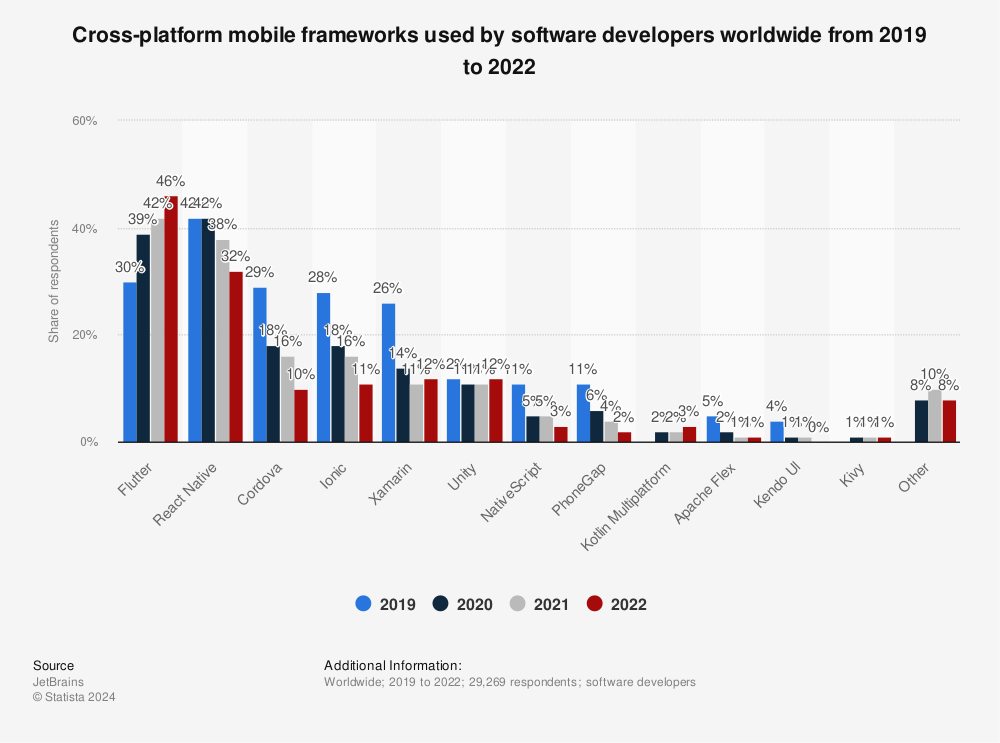

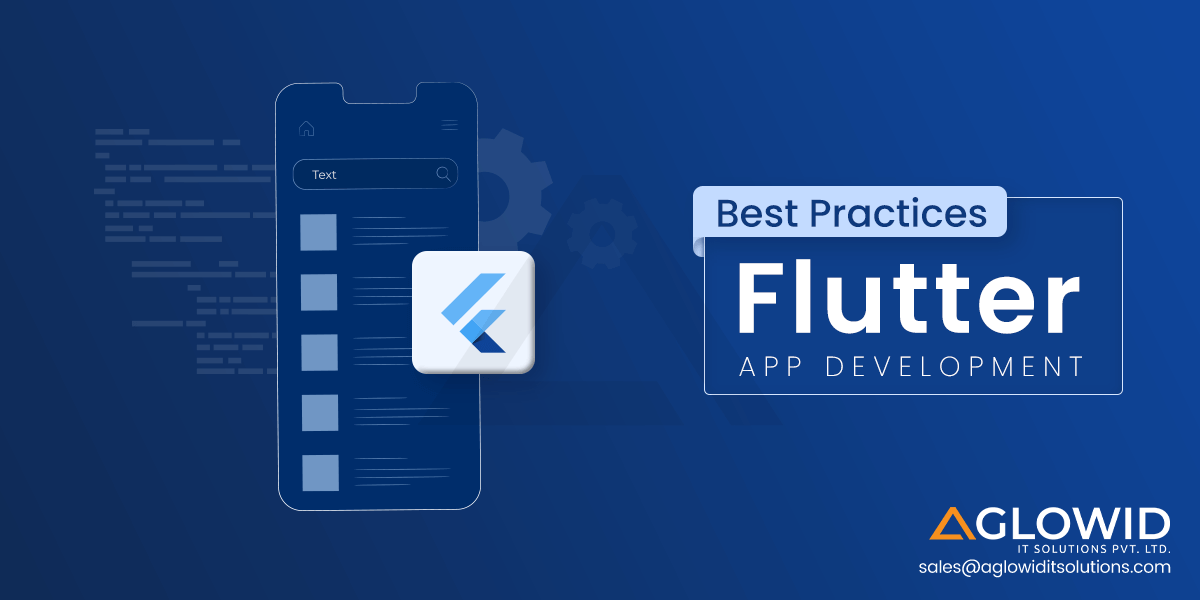


 Say
Say